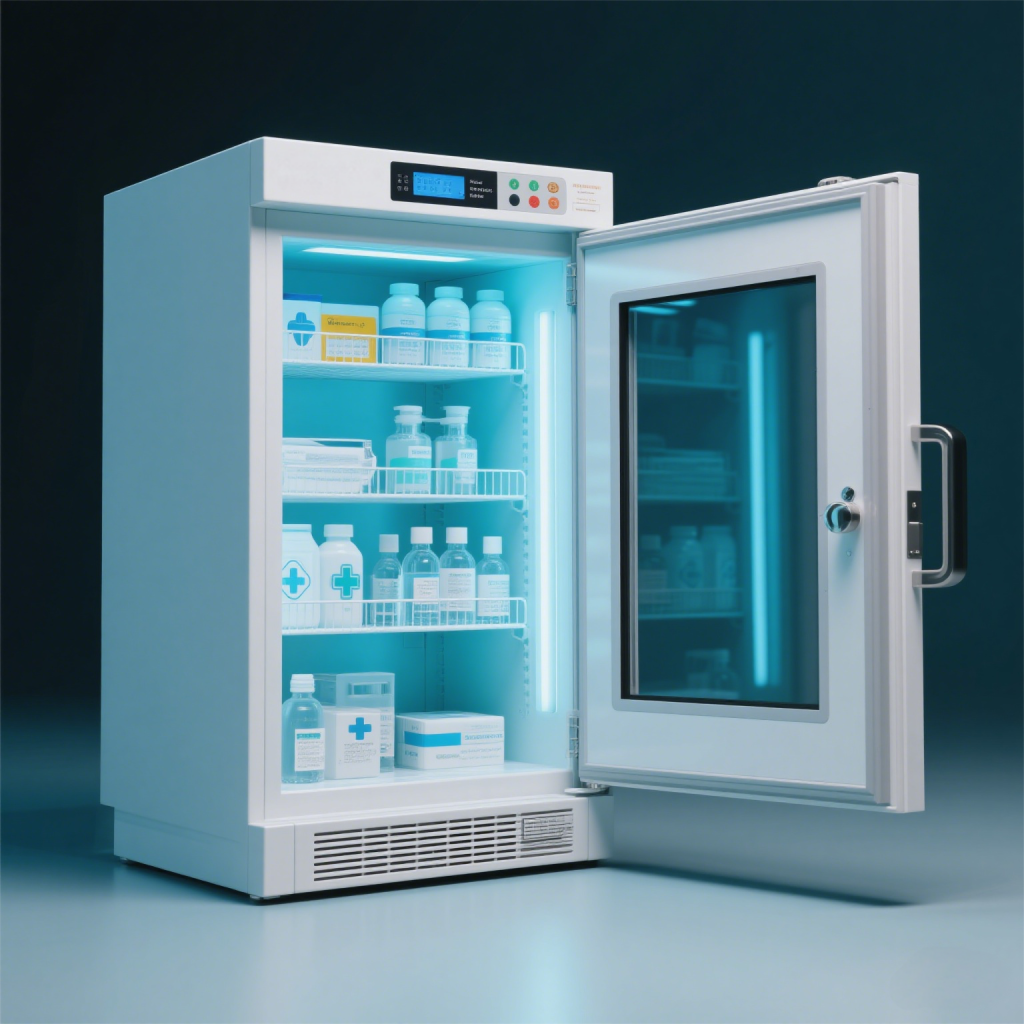The global disinfection cabinet industry is undergoing a technological revolution, driven by UV-C sterilization and AI-powered innovations. With a projected CAGR of 8.5% from 2023 to 2030 , these devices are no longer confined to hospitals—they’re now essential in households, restaurants, and industrial settings. Key advancements include UV-C LED cabinets like Atlantic Ultraviolet’s Sani UV-Cube™, which uses stainless steel construction and quartz shelves for 360° disinfection , and Seal Shield’s Shyld AI™, an autonomous system that disinfects high-risk areas in real time . This article explores how these technologies, combined with ozone sterilization and smart IoT integration, are reshaping hygiene standards worldwide.
Core Technologies Driving Innovation
1. UV-C Disinfection: The Gold Standard
UV-C light (200–280 nm) is the most widely adopted technology, effectively neutralizing 99.9% of viruses, bacteria, and fungi by disrupting their DNA . Key developments include:
- UV-C LED Integration: Energy-efficient LEDs replace traditional mercury lamps, offering longer lifespans and lower maintenance costs. For example, Atlantic Ultraviolet’s Sani UV-Cube™ uses four high-output UV-C LED lamps to disinfect medical instruments and salon tools within minutes .
- Far-UVC Advancements: 222 nm excimer lamps are emerging as a safer alternative, as they penetrate pathogens but not human skin, enabling disinfection in occupied spaces .
2. Ozone Sterilization: Chemical-Free Deep Cleaning
Ozone (O₃) is gaining traction for its ability to disinfect porous materials and hard surfaces. Modern ozone cabinets, like those from BioBase and Lab Stac, use UV-C+ozone hybrid systems to achieve 360° sterilization without residue . These devices are widely used in hospitals and food processing industries to eliminate stubborn pathogens like C. difficile and Candida auris .
3. AI and IoT-Enabled Smart Cabinets
AI-powered systems are revolutionizing user experience:
- Autonomous Operation: Seal Shield’s Shyld AI™, the world’s first autonomous UV-C system, identifies high-risk areas and disinfects them in real time, even in occupied rooms .
- Data-Driven Efficiency: IoT sensors monitor temperature, humidity, and UV-C dose, optimizing energy consumption. For instance, Tru-D IQ’s Tower and Scout devices use dynamic dosing to reduce cycle times by 50% compared to traditional systems .
- Remote Monitoring: Apps like Haier’s “Internet of Clothing” platform allow users to control disinfection cycles and track usage patterns via smartphones .
4. Material Innovations for Safety and Durability
Manufacturers are adopting stainless steel and quartz shelves to enhance durability and UV-C penetration. For example, the Sani UV-Cube™ features removable quartz shelves that ensure UV-C rays reach all surfaces, while its stainless steel construction withstands harsh environments .
Market Trends and Regional Dynamics
1. Rising Demand Across Sectors
- Healthcare: Hospitals and clinics are investing in medical-grade cabinets (e.g., Thermo Fisher’s sterile storage units) to reduce healthcare-associated infections (HAIs) .
- Commercial Spaces: Restaurants and hotels use ozone and UV-C cabinets to disinfect utensils and linens, aligning with post-pandemic hygiene mandates .
- Households: Portable UV-C cabinets (e.g., Xiaomi’s portable sterilizers) are booming, driven by consumer demand for sanitizing smartphones, masks, and baby items .
2. Regional Growth Hotspots
- Asia-Pacific: Dominates the market, with China and India leading in production and adoption. Midea and Haier control 40% of the region’s market share, driven by rapid urbanization and expanding foodservice industries .
- North America: Focuses on medical and industrial applications, with companies like Atlantic Ultraviolet and PDI Healthcare innovating robotic UV-C systems .
- Europe: Prioritizes eco-friendly solutions, such as energy-efficient ozone cabinets compliant with the EU Biocidal Products Regulation (BPR) .
3. Sustainability and Energy Efficiency
Manufacturers are developing low-power UV-C LEDs and recyclable materials to reduce environmental impact. For example, the portable disinfection cabinet market is projected to grow at a 3.7% CAGR by 2031, with battery-powered devices gaining traction .
Challenges and Future Outlook
Despite growth, the industry faces challenges:
- Regulatory Complexity: Compliance with standards like the U.S. EPA’s Stage 2 Disinfection Byproducts Rule and EU BPR adds costs .
- Consumer Awareness: Many users remain unaware of UV-C’s benefits, requiring education on safe operation .
Looking ahead, the industry will focus on AI-driven automation, portable solutions, and sustainable materials. With a projected CAGR of 8.5% from 2023 to 2030 , disinfection cabinets are set to become indispensable tools in creating healthier environments globally.
Keywords:
- Disinfection cabinet technology trends
- UV-C LED sterilization
- AI-powered disinfection systems
- Ozone sterilization cabinets
- Smart disinfection solutions
- Medical disinfection cabinet manufacturers
- Portable UV-C sterilizers
- Disinfection cabinet market size 2025
- IoT-enabled disinfection cabinets
- Sustainable disinfection technologies

